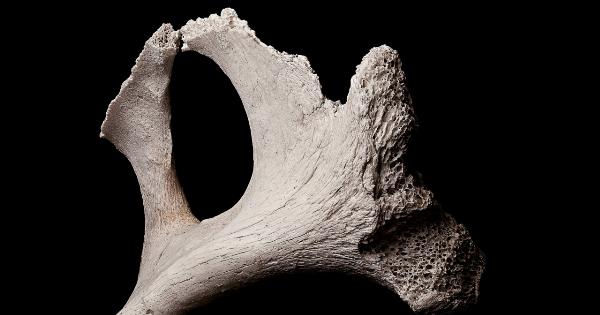Goose’s toe, located on the foot of waterbirds, is a complex system of specialized wrinkles that plays a crucial role in their survival.
These wrinkles, also known as lamellae, provide birds with the ability to efficiently walk, swim, and fly on varied terrains. Goose’s toe is a great example of how nature has evolved to optimize the physiological function of birds.
Anatomy of Goose’s Toe
Goose’s toe is covered with skin folds that create a series of interlocking wrinkles, providing better traction on slippery surfaces, and control over movement in water.
These wrinkles or lamellae are further divided into smaller fringes, adding greater depth and surface area to the bird’s foot. The deeper wrinkles on the goose’s toe are designed to interlock when it’s standing on soft or uneven surfaces, providing a stable platform for the bird.
These folds also help displace water in wet conditions, providing birds with better traction on the slippery ground and in the water.
Functionality of Deeper Wrinkles
The deeper wrinkles on goose’s toe improve the bird’s grip, balance, and agility in wetlands.
These wrinkles operate similar to the tread on a tire, helping geese move across various terrains by providing the necessary momentum and adhesion to navigate wetlands with ease. The deeper wrinkles also prevent birds from slipping and sliding on slippery surfaces.
The wrinkle’s interlocking patterns provide stability by creating suction force, allowing the bird to stand, glide, and launch from the water’s surface efficiently.
Role in Feeding
Geese are not only skilled swimmers but also excellent divers. The deeper wrinkles on their toe act as a snorkel, allowing them to hold their breath and dive to depths of up to 30 feet in search of food.
The skin folds help the bird maintain their buoyancy as well as provide a surface area for water resistance, while the interlocking patterns allow them to paddle and control their descent and ascent with greater ease.
Interaction with Environment
Geese toe’s deeper wrinkles also play an essential role in maintaining their body temperature. The warmth generated by the bird’s metabolic system is reflected back onto the goose’s toe through these wrinkles.
As a result, the foot stays warm even in icy water. The deeper wrinkles also minimize the contact area with the ground, reducing the conductive heat loss when walking on ice or snow.
Moreover, these wrinkles help prevent the accumulation of snow and ice between the toes and footpad, avoiding any frostbites.
Unique Characteristics of Goose’s Toe
What sets the goose’s toe apart from other birds is that it’s not webbed. Instead, the wrinkles on their toes provide better surface area, allowing them to paddle, dive, and paddle more efficiently.
Imagine if geese had webbed feet, they would struggle to control their movements and dive to depths necessary to catch food. Additionally, their toes are also not webbed, allowing them to better grip onto branches and rocks and helping them move around without slipping.
Conclusion
Geese’s toe is a prime example of how nature optimizes body structures to suit the adaptations necessary for survival.
The wrinkles or lamellae allow for achieving better traction on a variety of surfaces and make them stronger swimmers and divers. Understanding the importance of these deeper wrinkles not only helps us understand the goose’s biological makeup but also provides insight into other bird’s physical attributes.































